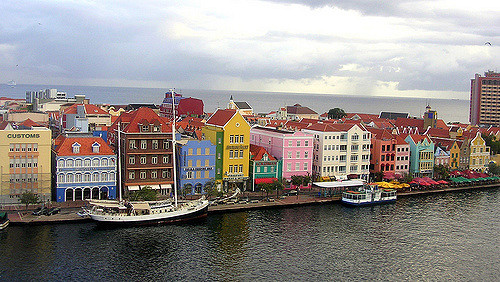
More Island Adventures in Curacao
 At first, Curaçao was the island that nobody wanted. Discovered in 1499 by Alonso de Ojeda and Amerigo Vespucci (from whom the name America is derived), who deemed it useless, due to it’s lack of gold or any remarkable resources, it was subsequently settled by the Spanish in 1527.
At first, Curaçao was the island that nobody wanted. Discovered in 1499 by Alonso de Ojeda and Amerigo Vespucci (from whom the name America is derived), who deemed it useless, due to it’s lack of gold or any remarkable resources, it was subsequently settled by the Spanish in 1527.
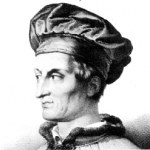
The native inhabitants of the island were Caiquetio Indians, a subgroup of the Arawak tribe of South America. They were soon enough all rounded up by the Spanish and sent to the island of Hispaniola (now Haiti and the Dominican Republic) to work in mines there. Reportedly, some were brought back a while later to work on other things on the ABC Islands and there is much evidence of Arawak ancestry in the people of the islands.
Although the Spanish and the Dutch were bitter enemies at the time, the Spanish gave up the island relatively easily to the Dutch in 1634. The Dutch West India Company (WIC) was a joint stock company based in Amsterdam that made profit by both plundering Spanish and Portuguese colonies or trading with them. The WIC displaced the Spanish colony and made the island a center of the African slave trade. In
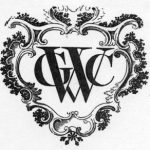
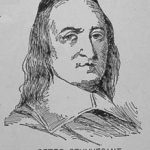
1642, a Dutchman named Peter Stuyvesant was made governor of the island. New Yorkers will know his name, as just three years later, he became governor of New Amsterdam, which then, under his governance was lost to the English, thereafter becoming New York. Known as “Old Silver Leg”, Stuyvesant lost one of his legs in an accident with a cannonball while leading an attack on the Portuguese in Saint Martin. He thereafter had a peg leg which was adorned with silver pins or bands. His amputated leg is buried on Curaçao.
Except for a brief period of English occupation during the Napoleonic Wars, Curaçao has remained under Dutch jurisdiction to the present day. Another influence on the island was from the Sephardic Jews who settled with the Dutch. Curaçao has the oldest surviving synagogue in the Americas, dating from 1674.
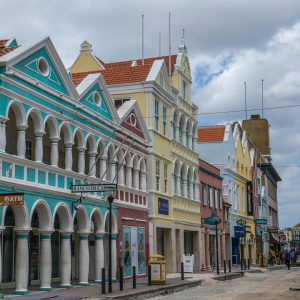
Ironically, this island that was originally deemed useless, has one of the best and busiest ports in the Caribbean. In 1915, Royal Dutch Shell established a major oil refinery on the island which contributed greatly to the prosperity of the island up until the mid 1980’s. Since then, tourism has been one of the main sources of commerce for the island with numerous upscale resorts and cruise ships dotting the island and shore.
Colorful Willemstad, the port/capital of the island, is a kaleidoscope of colors with gabled 17th century Dutch architecture, cobblestone streets and the Queen Emma Bridge. Originally the buildings of Willemstad were white washed, but in the 1800’s Governor Albert Kikkert, declared the glare from the sun on the white facades was “unappealing”.

8 thoughts on “More Island Adventures in Curacao”
We often travel to many places but never really know their history. The island of Curacao from what you have written seems to have quite the colourful history. It does amaze me how often the Europeans would come over and just displace the natives like the Spanish did by shipping the natives off to Haiti and the Dominican Republic.
From the Spanish influence and the Dutch and the Jewish influence Curacao sounds like a very interesting place to visit.
It’s no wonder that tourism is a main source of commerce for the island.
Thanks for the great information!
I found it especially interesting how the Papiamentu language spoken there developed out of all those influences, including the native Indian and African. And it is largely Portuguese based as well. You are certainly right about all the enslavement of natives, not to mention Curacao being a center of the African slave trade-it’s hard to believe that any of this was ever OK to anyone, but it makes for a fascinating and rich heritage. Thanks for your comment Maureen!
I love traveling to the Caribbean Islands so your blog was immediately appealing to me. Fascinating write-up about the island of Curacao. I really appreciated learning all about the history. It’s hilarious to think that Amerigo Vespucci deemed it as useless. It sure looks beautiful to me. And those architectural photos you posted are absolutely gorgeous!
There is so much interesting history in that part of the world. If Vespucci and the others could only see what the islands they discovered are like now! So glad you enjoyed the post! Best wishes!
I hadn’t heard of this place. I’d only heard the name before on bottles of alcohol.
Sounds like a very interesting island steeped in history. I’ve read many stories about the Spanish conquest of Central and South America over the years, particularly ones involving galleons and sunken treasure.
Your account of the history in this beautiful part of the world is intriguing. Thanks for sharing this with us.
Thanks for your comments and for stopping by Darren! It seems that most islands have fascinating stories to tell. Hope you will visit again.
Great lowdown on what seems like a fascinating island. I had heard of Curacao, but didn’t know the history behind it. Are there particular things you would recommend to do on the island? And it there a best time of the year to visit? It looks lovely from the photos
Hi Steve! I’m glad you enjoyed the post. Curacao has a year round tropical climate of about 82 degrees with lots of sun and pleasant sea breezes, so weather wise, any time of year is great. It is recommended that you go April to September if you want to avoid the crowds during the colder months. Curacao is a great destination for scuba diving, snorkeling and water sports. There are reefs and sunken ships to explore. Of the tree ABC islands, (Aruba, Bonaire and Curacao) Curacao probably has more casinos, shopping and nightlife. Many of the beaches are rocky, but there are some wonderful white sand beaches such as Cas Abao, Playa PortoMari and Mambo beach. For history, try Christoffel National park which has not only striking scenery, but old plantation houses. The Kura Hulanda museum in Willemstaad is a very powerful experience. It is a museum that deals with the islands slave trade. You can also visit the new world’s oldest synagogue. Of course a don’t miss is the Handelskade, particularly at night when the colorful facades are all lit up. There are a number of activities that can be booked. Jet skis and acquaboat tours, buggy adventures, a tuk tuk tour of the city and much more. Hope this helps!
John